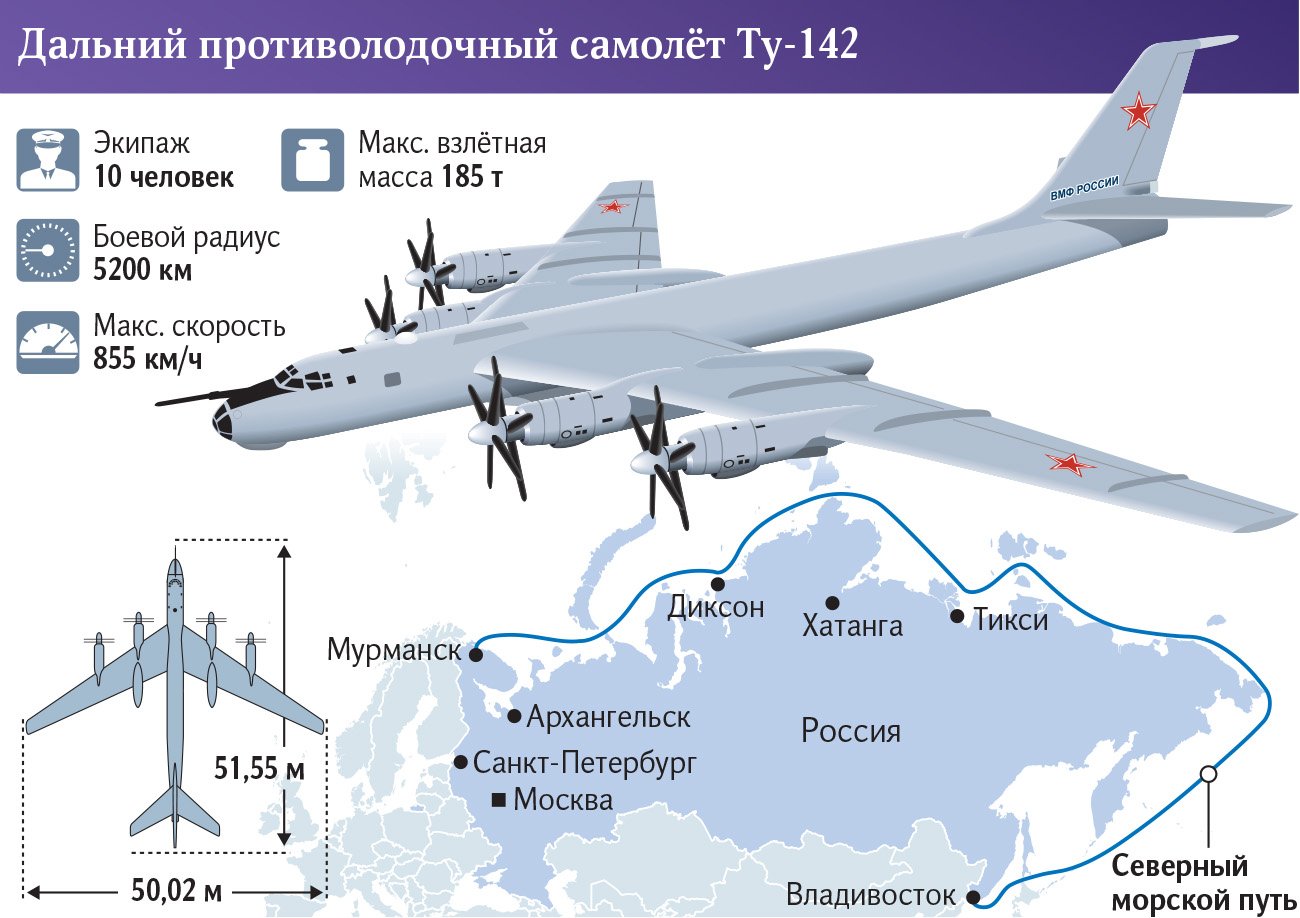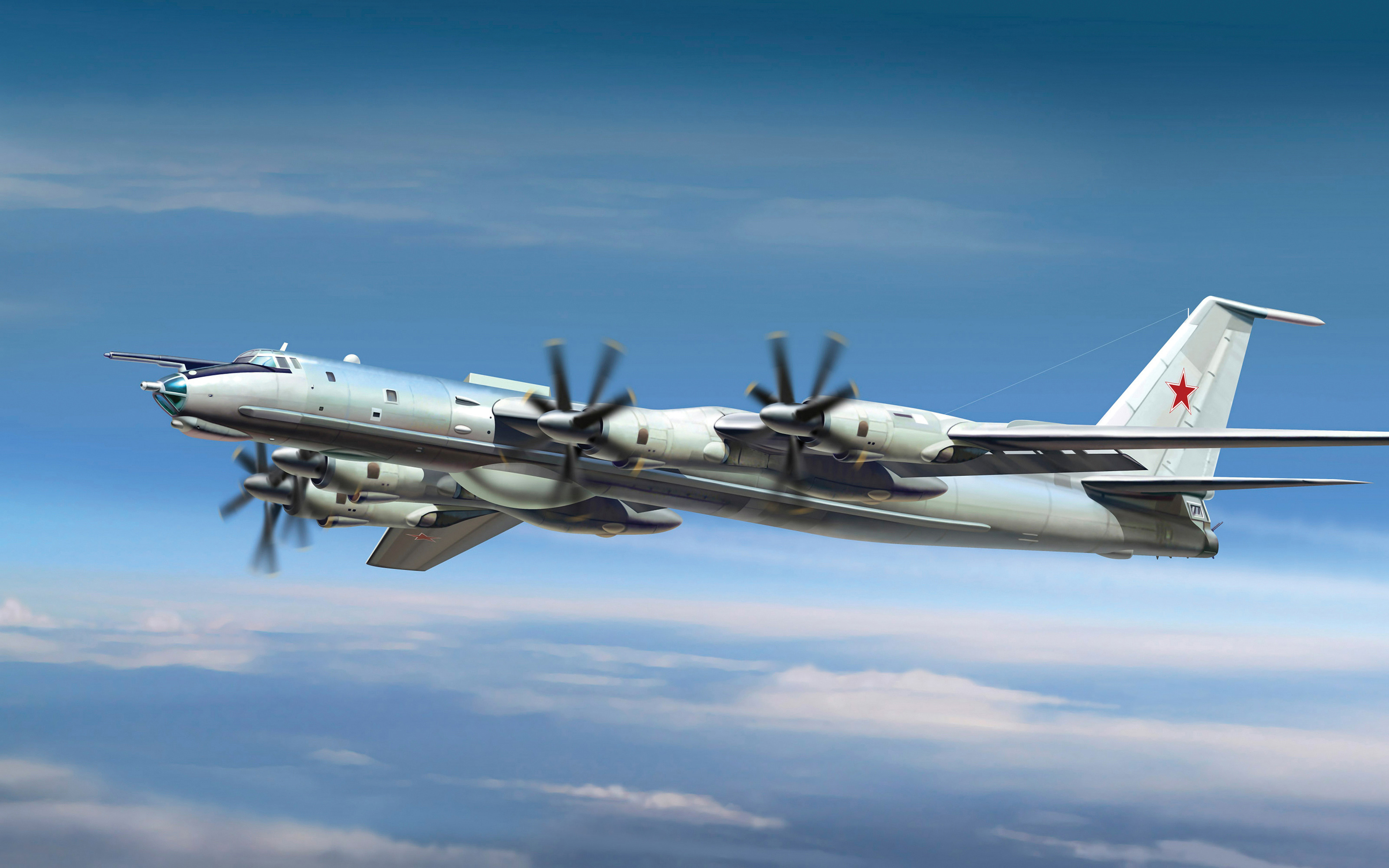Russia reportedly plans to deploy Tu-142 long-range anti-submarine aircraft for surveillance along the Northern Sea Route to detect potential hostile nuclear submarines.
Russian Defense Ministry sources told Izvestia that the Tu-142 aircraft from the Northern Fleet’s aviation are slated to participate in these operations. The decision to deploy Tu-142 aircraft for surveillance aligns with Russia’s strategic imperative to safeguard its interests in the Arctic region.
These aircraft, known for their extensive flight range, are capable of effectively patrolling the Northern Sea Route without requiring frequent landings. The Tu-142 long-range anti-submarine aircraft boasts an impressive flight range exceeding 5,000 kilometers.
This exceptional range enables the aircraft to undertake extended flights and maintain prolonged surveillance over areas frequented by enemy submarines.
Igor Malikov, a highly regarded figure in Russian aviation circles and an Honored Test Pilot, said that aerial surveillance plays a significant role in safeguarding coastal territories.
Malikov emphasized the versatility of the Tu-142 aircraft, noting the aircraft’s capability to detect various maritime objects, including submarines.

He further stressed the need for enhancing regional bases and infrastructure to counter potential threats posed by adversaries seeking to access the route.
In addition to surveillance tasks, the Tu-142 aircraft will be crucial in assisting with emergencies along the Northern Sea Route.
With the route witnessing increased activity, Malikov advocated for strengthening search and rescue services to address unforeseen risks and ensure the safety of maritime traffic navigating through the Arctic waters.
Regarding operational logistics, Malikov outlined the strategic positioning of bases on the Kola Peninsula and in Vologda, enabling the Tu-142 aircraft to cover the vast Arctic expanse effectively and monitor activities along the Northern Sea Route.
He justified these measures by citing attempts by unfriendly nations to access the route, asserting Russia’s historical claim to the region and its commitment to safeguarding its sovereignty.
Rationale Behind Russia’s Enhanced Presence
The deployment of Tu-142 aircraft represents Russia’s latest step in a series of efforts to protect its territorial interests in the strategically crucial Arctic region.
The Northern Sea Route (NSR) holds strategic importance as a maritime passage cutting through the Arctic region, facilitating connectivity between Europe and Asia.
With the melting of Arctic ice caused by climate change, the NSR has become progressively feasible for commercial shipping, providing shorter transit between Asia and Europe in contrast to conventional routes.
Furthermore, the strategic significance of the Northern Sea Route has been heightened by the competition for control over Arctic resources, such as oil, gas, and minerals.
Russia, Canada, Denmark (via Greenland), and Norway all have overlapping claims in the Arctic, resulting in heightened competition to explore and exploit these resources.

The United States and several other states consider Russia’s claim of control over the Northern Sea Route (NSR) expansive and inconsistent with international law.
Although the route predominantly traverses Russia’s exclusive economic zone, Western nations, notably the United States and certain European countries, advocate for the principle of freedom of navigation, advocating for unrestricted passage through international waters.
In contrast, Russia mandates that foreign vessels obtain permits and adhere to specific regulations when navigating the NSR, asserting its sovereignty and citing security concerns in the Arctic region.
Over the past decade, Russia has been engaged in active efforts to construct infrastructure in the Arctic and deploy forces to oversee the Northern Sea Route.
However, the country significantly accelerated its military presence in the region following its invasion of Ukraine.
In December 2023, Russian media reported the formation of a mixed aviation corps within the Northern Fleet.
One of its primary objectives is to safeguard the Northern Sea Route against threats from enemy air, land, surface, and submarine forces.
This corps comprises two fighter naval aviation regiments, namely the 279th and 100th, alongside a mixed aviation regiment equipped with An-12 and An-26 transport aircraft and Il-38N anti-submarine aircraft.
Furthermore, the corps has been reinforced with Ka-27, Ka-29, and Mi-8AMTSh/MTV-5 helicopters.
Aviation assets of the mixed aviation corps have already commenced operations at Russian Arctic military bases.
Notably, Su-33 and MiG-29KR fighters from naval aviation regiments are executing missions to protect the Northern Sea Route and other Arctic regions from the Rogachevo airfield on Novaya Zemlya.
- Contact the author at ashishmichel(at)gmail.com
- Follow EurAsian Times on Google News




